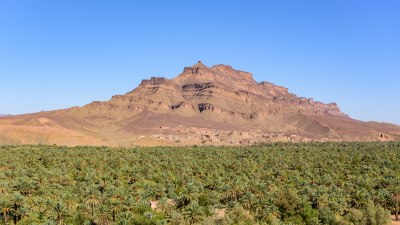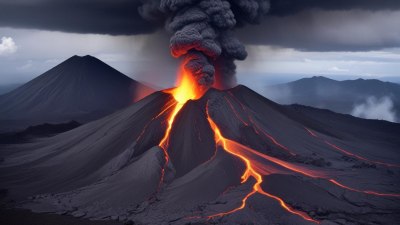Why Asia’s Climate Goes from Desert to Jungle to Ice in Just a Few Borders
Explore the diverse climates of Asia from deserts to jungles to icy regions and their unique geographical features.

Asia, the largest continent on Earth, exhibits an astonishing array of climates, ranging from arid deserts to lush jungles and icy tundras. This fascinating climatic diversity can be observed within short geographical distances, often delineated by mere borders. The reasons for such dramatic variations in climate lie in the region's vast topography, diverse ecosystems, and the influence of ocean currents and monsoon systems. Understanding how these climatic zones interact can provide insights into the intricate relationship between geography and climate in the region.
The Geographic Layout of Asia
Asia spans a significant range of latitudes and longitudes, covering approximately 44.58 million square kilometers. Its vast area encompasses diverse geographical features, including mountain ranges, plateaus, plains, and coastline, all of which influence its climatic conditions. The continent is bordered by several major bodies of water—most notably the Pacific Ocean to the east and the Indian Ocean to the south—which play a crucial role in modulating temperatures and precipitation patterns across the continent.
One of the most prominent features affecting Asia's climate is the presence of the Himalayan mountain range, which separates the Indian subcontinent from the Tibetan Plateau and further influences climatic conditions. The Himalayas act as a barrier to westerly winds, creating rain shadows that contribute to the varying climates on either side. For instance, while the southern slopes receive copious amounts of rainfall, the northern slopes experience aridity, giving rise to different ecosystems.
Desert Climates
Asia is home to some of the world’s largest deserts, including the Gobi and the Arabian Desert. These areas typically experience low precipitation, high evaporation rates, and extreme temperature fluctuations between day and night. The Gobi Desert, for instance, spans parts of northern China and southern Mongolia, characterized by its cold desert climate. It receives less than 200 mm of rainfall annually, primarily in the summer months, and is known for its harsh winters.
The vast stretches of dry, arid land in Central Asia are influenced by the region's continental climate and the position of the mountain ranges, which block moisture from reaching the inner parts of the continent. This stark climatic environment limits biodiversity, with only specially adapted flora and fauna able to thrive in such conditions. However, even these desert ecosystems are sensitive to climate change, showing the impact of global warming on biodiversity and desertification.
Tropical Rainforests and Jungle Climates
In stark contrast to the deserts, Asia also hosts some of the most biodiverse tropical rainforests on the planet, particularly in Southeast Asia. Countries like Indonesia, Malaysia, and Thailand are renowned for their lush jungles, abundant rainfall, and rich ecosystems. These regions experience a tropical rainforest climate, characterized by high humidity and consistent rainfall throughout the year.
The influence of monsoon winds plays a crucial role in sustaining these forests. The Southwest Monsoon, which typically occurs between May and September, brings heavy rainfall to the coastal regions, fueling the growth of dense vegetation. The jungles not only support a wide variety of plants and animals but also play a significant role in carbon sequestration, helping mitigate climate change impacts.
Temperate Regions and Seasonality
Moving northwestward from the jungles, one encounters temperate regions, such as those found in Northern China, Japan, and parts of Korea. These areas exhibit four distinct seasons, featuring hot summers and cold winters. The influence of the Siberian High during winter months can lead to extremely low temperatures, especially in northern regions, while the summers are often characterized by a warm, humid climate.
Forests in these areas often consist of both deciduous and evergreen trees, adapting to the seasonal changes. The diversity of tree species, such as oak, maple, and pine, ensures that these forests remain vibrant and support a variety of wildlife. In these temperate zones, the delicate balance between the seasons is a testament to the unique climatic conditions of the region.
Subarctic and Arctic Climates
As one moves further northwards, the climate transitions into subarctic and arctic conditions in regions such as Siberia and the northernmost parts of Russia. These areas experience long, harsh winters and short, cool summers. The tundra biome dominates this climate zone, characterized by permafrost, low vegetation, and extreme cold temperatures for most of the year.
The presence of vast ice sheets and glaciers in Siberia significantly influences the global climate system. These areas are not only crucial for biodiversity, providing unique ecosystems, but also have a profound impact on sea levels and climate patterns across the globe. Melting glaciers in the Arctic are a stark reminder of the pressing issue of climate change.
Climate Change Impacts Across Borders
As Asia's climate varies so dramatically from region to region, the impacts of climate change are also diverse and potential catastrophic. In the desert regions, increased aridity and prolonged droughts threaten water security, agriculture, and the survival of native species. Water scarcity can lead to conflict, particularly in arid areas where competition for resources is fierce.
Conversely, tropical regions are facing the threats of deforestation due to logging and land conversion for agriculture. The loss of rainforest significantly contributes to accelerating climate change, as these forests act as critical carbon sinks. Additionally, the increased frequency of extreme weather events, such as floods and cyclones, poses threats to both human and wildlife populations in these regions.
Adaptive Strategies and Conservation Efforts
In light of the vast climatic diversity in Asia and the imminent threats posed by climate change, adaptive strategies are essential for mitigating impacts. Sustainable land management practices, conservation of biodiversity, and restoration of degraded ecosystems will play key roles in addressing climate-related challenges.
Governments, NGOs, and local communities must collaborate to implement effective policies that safeguard the environment, promote sustainability, and enhance resilience to climate change. Awareness campaigns can also educate the public about the importance of conserving biodiversity and protecting ecosystems.
The remarkable shift in climate from deserts to jungles to icy tundras within Asia reflects the continent's geographic, ecological, and climatic complexities. Each climatic zone presents its own set of challenges and opportunities in the face of climate change. Understanding these diverse climates and their interconnectedness is crucial to developing effective conservation and adaptation strategies, ultimately ensuring the resilience of both people and the environment in this dynamic continent.











